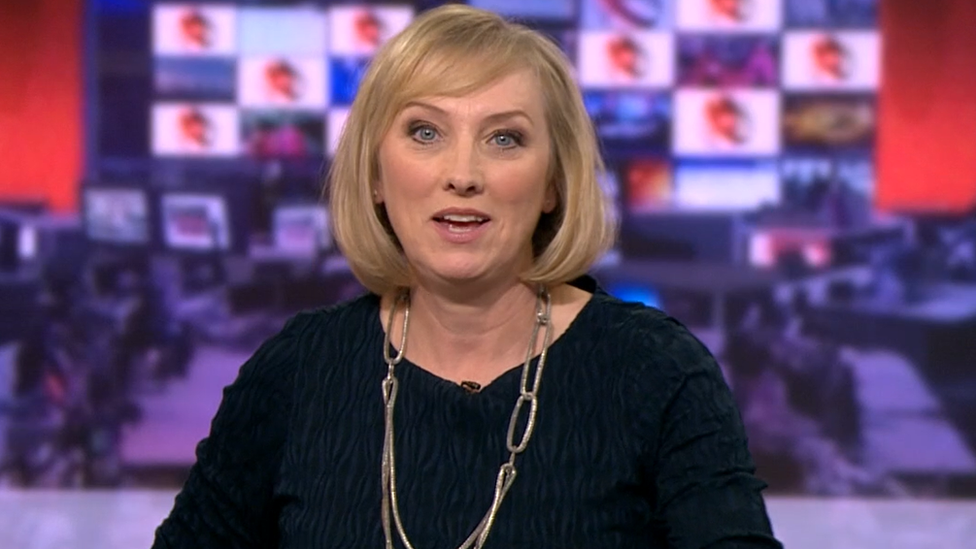Tragedy and the News
Tragedy, fittingly but unfortunately, makes news.
When a terrorist attack slays innocent victims, the horror hits the headlines. When a random street shooting takes down unsuspecting bystanders, the killings elicit on-the-scene local news reports. When soldiers die in a combat raid, the casualties and bravery receive high mention and praise.
Not just these, but a wide, and horrific, range of similar tragedies draw essentially assured and often immediate media coverage — for sure the just mentioned terrorist attacks, street murders, and armed forces casualities, but also the calamities and heartbreaks of hurricanes, floods, tornadoes, serial killings, mass shootings, explosions, plane crashes, disease plagues, famines, genocides, fatalities of first responders — we could go on. Almost without exception all segments of the media report, extensively, on these type incidents. Death cuts to the core of the human spirit. The media, both as a conduit and a reflection of the human condition, rightfully and respectfully report on these tragedies. We would and should expect no less.
But not all tragedy makes news; media reporting of fatalities does not encompass the larger, more extensive range of deaths. A million people in our country die annually of cancer, heart disease, stroke and diabetes, year in and year out. Daily, by the hundreds, the unlucky or in too many cases imprudent die in auto accidents, the despairing at their own hands in suicide, the elderly in falls, and the young of prenatal complications and birth defects.
This larger, wider group of casualties does receive, at times, media coverage, as well as periodic and in-depth special reports, and we react to these casualties with the same empathy, concern and sorrow as the more often reported types of tragedy. But clearly, media reporting of deaths from this latter group of causes, deaths from cancer, or strokes, or elderly falls, or suicides, that reporting runs lower overall, and much lower on a per death basis, than the reporting garnered by the headline incidents mentioned earlier — the killings by terrorists, the murders from street violence, the deaths in combat, the fatalities of a mass shooting, the victims of plane crashes.
This does not seek to assail or denigrate or criticize the important and critical reporting of the tragic and deadly incidents the media does cover, nor does this argue for any less coverage of terrorist attacks, or natural disasters, or casualties among our armed forces and first responders. This coverage pays respect and reverence to the unfortunate and in too many cases innocent and unsuspecting victims. And the coverage stirs us to action — to strengthen our defense against terror, to donate, to volunteer, to improve safety, to hold our government accountable, to demand better actions of our corporations, to improve our disaster preparations, to change our habits, or to simply learn and understand.
And if we find ourselves overloaded by this coverage, we can turn away for a respite. But if we lacked coverage, we couldn’t fill the void.
So why raise this strong concern about the differing levels, dare say drastically differing levels, of coverage of the diverse segments of the spectrum of deaths?
Why? Because if we truly desire to prevents deaths and preserve life, we must check. We must check whether differing levels of reporting on different causes of death and fatalities, whether those differing levels lead us to miss, possibly unintentionally, critical and important lifesaving efforts. Do we neglect or overlook actions and programs that could be taken to forestall and reduce casualties?
The Attributes of Newsworthy
Let’s start by examining what about an incident makes it newsworthy, what raises a story to the threshold warranting reporting.
To start, as a fairly obvious point, being newsworthy implies just that, being new, sometimes absolutely new, like a new discovery, but more often new, different, unusual, referenced against the normal course of events. The incident must rise above the immense background of innumerable events occurring normally, every day, multiple times a day, in multiple locations.
Consider, for example, trees. Lumber companies harvest, hopefully in an environmentally sound way, millions of trees a year — nothing special, not often reported. However, when one of those harvested trees will serve as the centerpiece of the holiday display say in Washington DC’s Ellipse, that singular tree will, very likely, merit media attention. Thus, similarly, in terms of the tragic, reporting goes not to the millions of acres of forests where trees grow, uneventfully, a bit each day, but rather to those several thousand acres that erupt into deadly and destructive forest fires.
Think of our commutes and travel for work and business. Thousands and thousands of planes, trains, buses and subways complete their journey each day successfully, though more often than desired subjecting the passengers to annoying, but minor, inconveniences. Reporting though centers on those few journeys which do not reach their destination, through a crash, or derailment, or need for emergency evacuation.
What other key attribute elicits strong reporting? Human poignancy. The upstanding cab driver who works tirelessly to return a priceless violin left in the taxi, such an incident draws news attention. The beauty of the Cherry Blossoms, again in Washington, DC, and again to use another example involving trees, strikes us with charm and grandeur, and as such can become a photo or video feature in the media.
On the tragic side, the poignancy runs darker — incidents of appalling injustice, or terrifying vulnerability, or mystifying origin. Terrorism rivets us on all these dimensions. We cringe at unfairness heaped upon the innocent victims and the barbaric psyche of the slayer; we find ourselves feeling no place lies outside the reach of such acts; and we can not relate or understand how or why a person could justify their killing actions.
News also seeks to prepare us, and to inform us, of events with major impacts. We receive daily weather and traffic reports, in tight snippets when conditions run about normal, but when the traffic or weather hits the extreme — a truck explosion shuts down the entire expressway, or a winter snowstorm threatens deep snow, heavy drifts and high winds — the coverage expands, both to prepare us and to report the impact.
We can now, at a broad level, comprehend the differing level of coverage across the spectrum of tragedies and death. We can do so since, at a broad level, we see a subtle, or maybe not so subtle, distinction in media news coverage. That coverage focuses not just on events within certain categories. Rather, in a good measure, news reporting picks out events, across any and all categories, with the high profile characteristics detailed above.
Consider politics and government. Much about these items, say the innumerable pages of the Federal Register or the multiple and daily speeches in the halls of Congress, goes by with little reporting.
But if a scandal emerges, reporting often follows. Scandal rivets us, with its confluence of deceit and privilege and special influence. That poignancy triggers news attention. Thus, the media details and exposes the private plane junkets of a Congressional representative, or the expensive luxury upgrades of the office of a public administrator, or secret meetings of a campaign official with foreign operatives.
But by-and-large the media will bypass stories of less human interest and emotional content. Consider the last time we might have come across a news feature on whether alternate algorithms for distributing medical research grants would improve post-surgical life expectancy for heart operations.
Let me not overstate the slant in media focus in death reporting. We certainly can find investigative reports on low profile incidents and causes. The media attention to the flamboyant, or extraordinary, or devastating, does not rule as an absolute. But certainly the tendency runs strong.
This strong tendency aligns with our hypothesis here, that news provides only a partial perspective on the spectrum of death. The news captures the extraordinary, the moving, the enraging, the highly impactful, the directly related to immediate preparedness, but misses to a large extent the typical, the recurring, the individually insignificant.
And from a pragmatic standpoint, many deaths fall into this later group, and thus in turn fall below the media’s radar. The deaths from strokes, and suicides, and cancer, and falls, and a whole group of similar daily, recurring, typical causes, these deaths sum collectively to an enormous toll. However, each death, taken individually, lacks, in the vast percentage of cases, the visibility, drama or uniqueness to break into the news cycle.
Do the data on fatalities support this observation, that the lightly and under-reported fatalities represent frequent and recurring actual causes of death? Let’s look at the data to check.
The Spectrum of Death
We will start with six causes of fatalities receiving extensive and heavy reporting across essentially all levels and types of media, and look at fatality data for each. The six consist of the following, and will be referenced as “the first group”:
- Weather
- Mass Shootings
- Police Fatalities
- Armed Forces Casualties
- Airplane Crashes
- Assaults
The fatality data below refer to the United States.
Weather – The National Weather Service reports a total of 9,714 deaths from weather causes for the 17 years of 2000 to 2016. The weather events include a comprehensive range, including hurricanes, floods, tornadoes, blizzards, heat waves, wind and so on. This covers directly attributed deaths. We can project an equal, or even greater, number of ancillary deaths, for example heart attacks from the physical or psychological stress of the severe weather, but not directly attributed to the weather.
Mass Shootings – A compilation by the group Violence Against Guns lists 1,086 deaths in mass shootings, including terrorist, from 2014 to 2016. Mass shootings, for their compilation, include incidents with 4 or more injuries or deaths.
Police Fatalities – Violence Against Guns also identifies that 259 police officers have died from gun attacks for the same three years. The National Law Enforcement Officers Memorial Fund identifies a higher number, 416, for the three years. The later includes traffic-related and other causes, while the former focuses on gun related.
Armed Forces – In the major combat operations in the Middle East and Afghanistan, the armed forces, all branches, have suffered 6,918 casualties from 2000 through mid-2017. The figures include all causes, both those suffered in combat and those due to non-hostile incidents.
Air Plane Crashes – Crashes of all air vehicles, including helicopters and private planes, as well as commercial jets, have taken 9,925 lives in the U.S. from 2000 to mid-2017. Of the total, 1,264 involved six or more casualties in the incident. The NTSB report excludes casualties on the ground, so the totals here exclude the deaths of individuals in the World Trade Center and at the Pentagon, but do include the passengers on the planes.
Assaults – Tragically, assaults took the lives of 15,872 individuals, in just one year, 2014, as reported by the Center for Disease Control, based on the data in the comprehensive compilation of all deaths in the universal reporting system. More than two-thirds of these fatalities resulted from firearms, and the victims averaged the too young age of 35.
This first group of causes of death did and do take a heavy toll of lives lost. And as exemplified by the young average age of assault victims, the causes cut off many years from the future of these victims.
Our goal, though, remains to gain perspective. Six other causes of death also impacted individuals in their early or middle life, with the average age of infliction shown following the name of the cause. We will call this collection of six the “second group”.
- Pre-natal Issues – Average age less than one year old
- Birth Defects – Average age less than 30, with half or more less than 15
- Suicides – Average less than 50, with half done with firearms
- Auto Accidents – Average less than 45
- Drug-Related – Average less than 45
- Drowning – Average less than 40
The six causes of fatalities produced their own toll of victims, as follows, for one year, again 2014, as reported by the CDC.
- Pre-natal Issues – 11,897
- Birth Defects – 9,609
- Suicides – 42,826
- Auto Accidents – 35,398
- Drug-Related – 42,032
- Drowning – 3,406
We do not want to venture into judgments of the value of one life verses another, or whether one cause of death stands more noble or tragic than another. However, we can — and must — observe that the loss of life from the second group of causes produces deaths with noticeably more frequency than the first group. The second group kills order-of-magnitude 100 thousand individuals a year, more than the first five of items in the first group killed since 2000, and well more on a yearly basis that the sixth item, assaults, of the first group.
In contrast to the greater number of fatalities, media coverage of the second group runs significantly lower that the first group. The second group accounts for hundreds of fatalities a day. But accounts of individual deaths in the second group break through into national coverage only sporadically, a couple dozen times a year, mainly related to noted individuals or celebrities. Even at the local level, five of the six categories, all except auto accidents, receive only occasional reporting of individual incidents. Now, auto accidents do garner significant local news coverage of singular deaths; however, that coverage, if one watches for a period days, runs lower and with less priority that murders and even non-fatal crimes.
As noted before, this levels no criticism at reporting on airplane crashes, or mass shootings, or the heroism of first responders and armed forces personnel. And issues such as drunk driving, and birth defects, and gun-related suicide, and pain killer deaths, do receive periodic reports.
Consider, though, that a mass shooting can trigger hours of continuous coverage, and a commercial airplane crash can merit mention for days, weeks and even months. In contrast, we may have not seen a news spot or special report on non-celebrity drowning or suicide in the last month or year, and if so, a relatively brief mention. We may remember a sporadic in-depth report on pre-natal deaths or birth defects, but likely never a current news spot reporting the deaths of that day on those causes. Rarely if ever does a reporter go to a hospital and interview doctors for items in the second group, while dozen of news reporters will seek same-day comments from medical personnel for terror attacks and mass shootings.
A third group covers the largest count of deaths, a group consisting essentially of medical causes. While the first group totaled 10 to 20 thousand deaths a year, and the second group 100 plus thousand deaths a year, this third group causes, currently, two million U.S. deaths a year. This group consists of six major groupings of medical conditions, with the numbers below showing the 2014 death toll:
- Cancer (all organs) – 591,000
- Heart (including circulatory conditions) – 807,000
- Lung (including influenza) – 258,000
- Brain (including stroke) – 120,000
- Other Organs (liver, kidney, prostate, digestive) – 96,000
- Other Conditions (diabetes, other infections, anemia) – 172,000
The average age for these causes generally exceeds 65, to the degree that offers a perspective. Notably, the 2014 data show 50 thousand deaths from these causes for individuals between 15 and 45, and 400 thousand deaths for individuals between 45 and 64.
In terms of media coverage, on a per death basis, and a gross basis, the causes of death in this third group receive very little coverage. Again, this does not imply those incidents in the first group should receive any less coverage. But the qualitative observations in the earlier sections of the discussion, and the quantitative discussion here, shown an almost inverse relationship between the amount of media coverage, and the numbers of deaths for a given cause.







